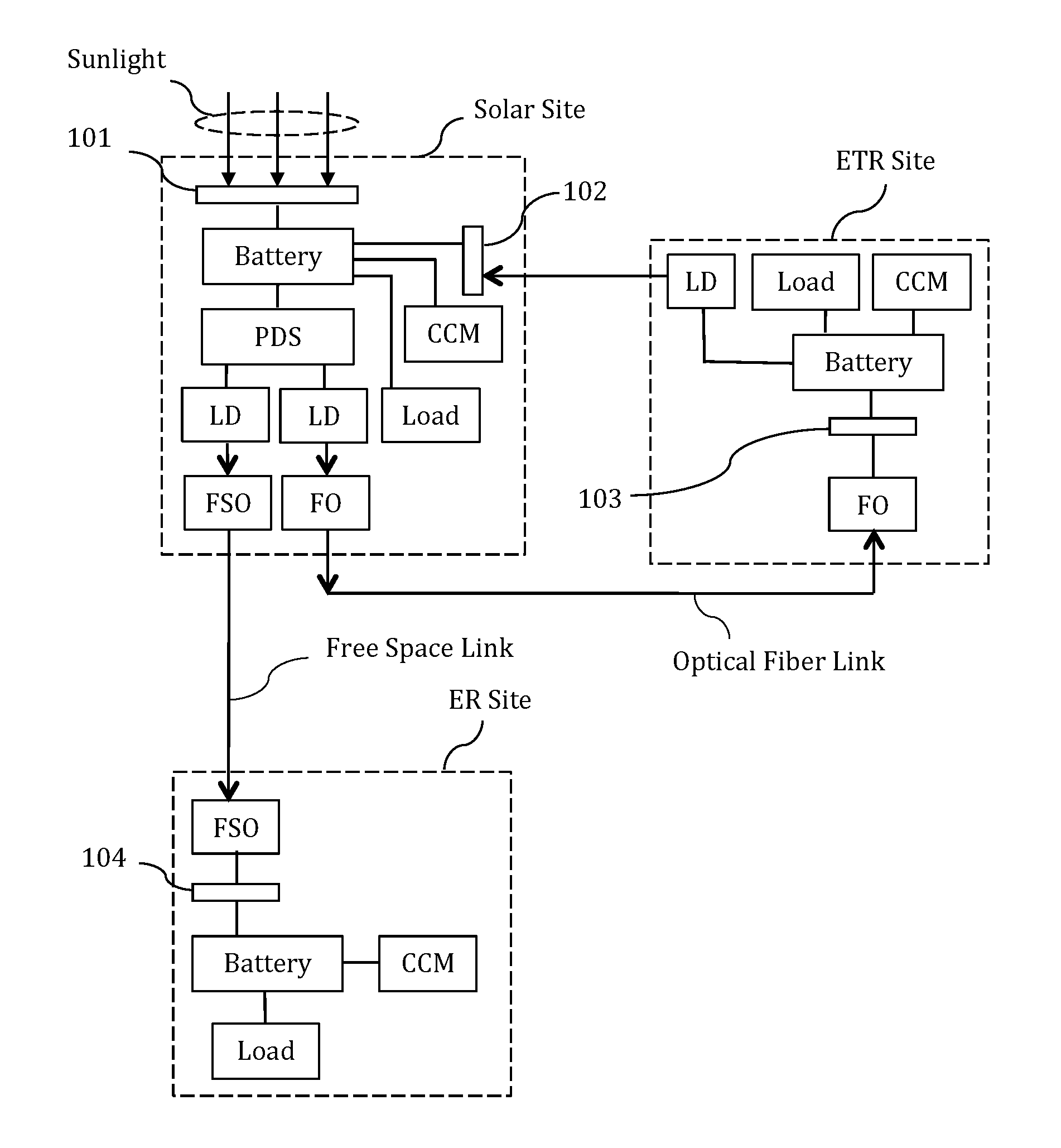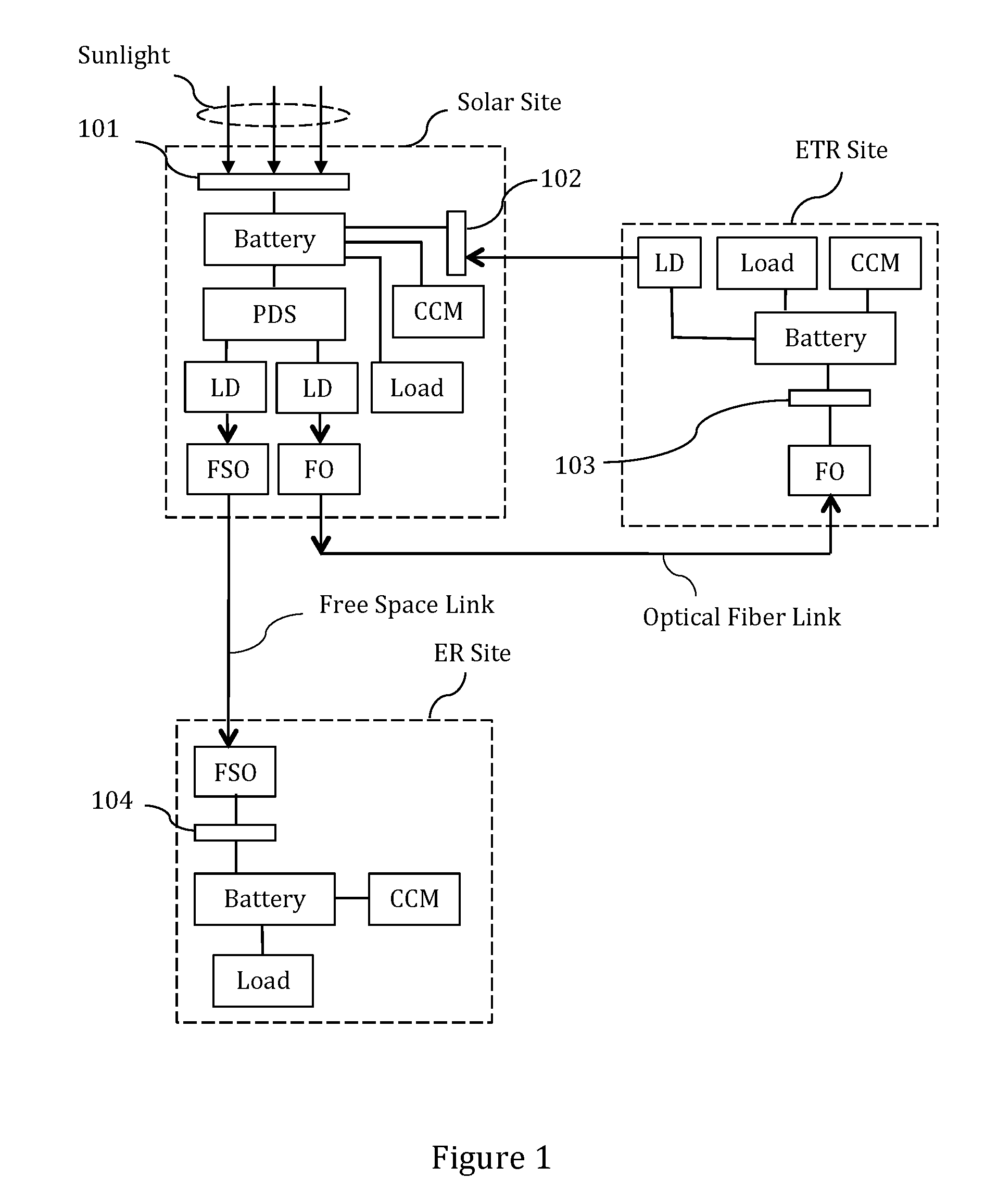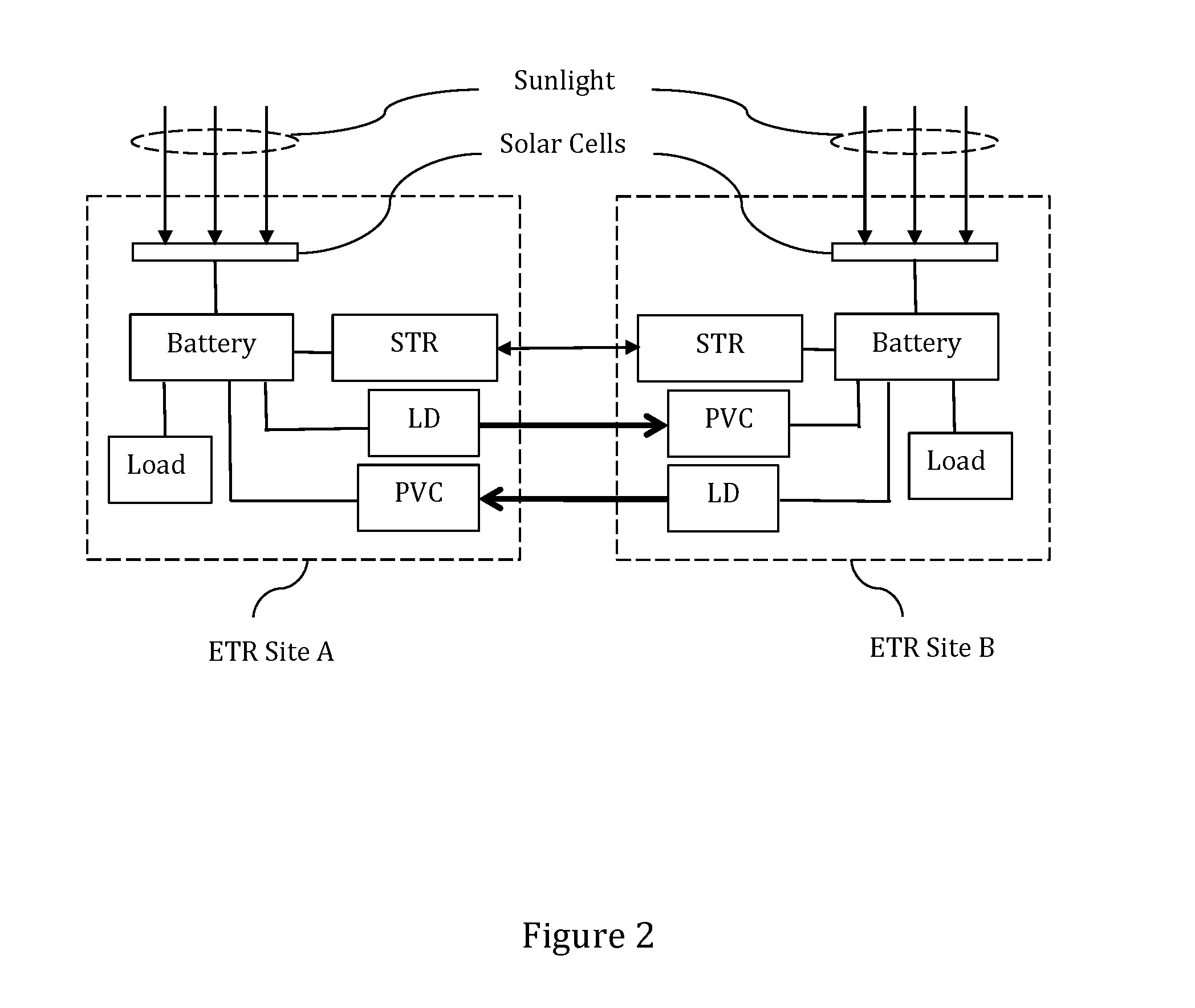Systems and Methods for Dynamic Energy Distribution
a dynamic energy and energy distribution technology, applied in the energy industry, transportation and packaging, sustainable buildings, etc., can solve the problems of inconvenient or undesirable attachment of iot devices to a conventional power grid, recharging or replacing batteries, becoming a major challenge in terms of time consumption or material and labor costs
- Summary
- Abstract
- Description
- Claims
- Application Information
AI Technical Summary
Benefits of technology
Problems solved by technology
Method used
Image
Examples
Embodiment Construction
[0021]FIG. 1 shows, by way of example, an embodiment of the energy distribution system of the current invention. A solar site comprises a solar cell 101 that converts sunlight energy to electrical energy to charge a battery that supplies power to other devices and electrical loads at the site. The solar site battery can also be charged by receiving and converting optical power delivered from a spatially separate energy transmitting-receiving (ETR) site using a light-power receiver 102 that converts light energy to electrical energy. An optical fiber link and a free space link connect the solar site to the ETR site and to a separate energy-receiving (ER) site, respectively. Energy at the solar site is delivered to the ETR site by first coupling the light beam from a laser diode (LD) into an optical fiber using fiber optics (FO) components, and then transmitting the fiber-coupled light beam to the ETR site via an optical fiber link between the solar site and the ETR site. The FO compo...
PUM
 Login to View More
Login to View More Abstract
Description
Claims
Application Information
 Login to View More
Login to View More - R&D
- Intellectual Property
- Life Sciences
- Materials
- Tech Scout
- Unparalleled Data Quality
- Higher Quality Content
- 60% Fewer Hallucinations
Browse by: Latest US Patents, China's latest patents, Technical Efficacy Thesaurus, Application Domain, Technology Topic, Popular Technical Reports.
© 2025 PatSnap. All rights reserved.Legal|Privacy policy|Modern Slavery Act Transparency Statement|Sitemap|About US| Contact US: help@patsnap.com



